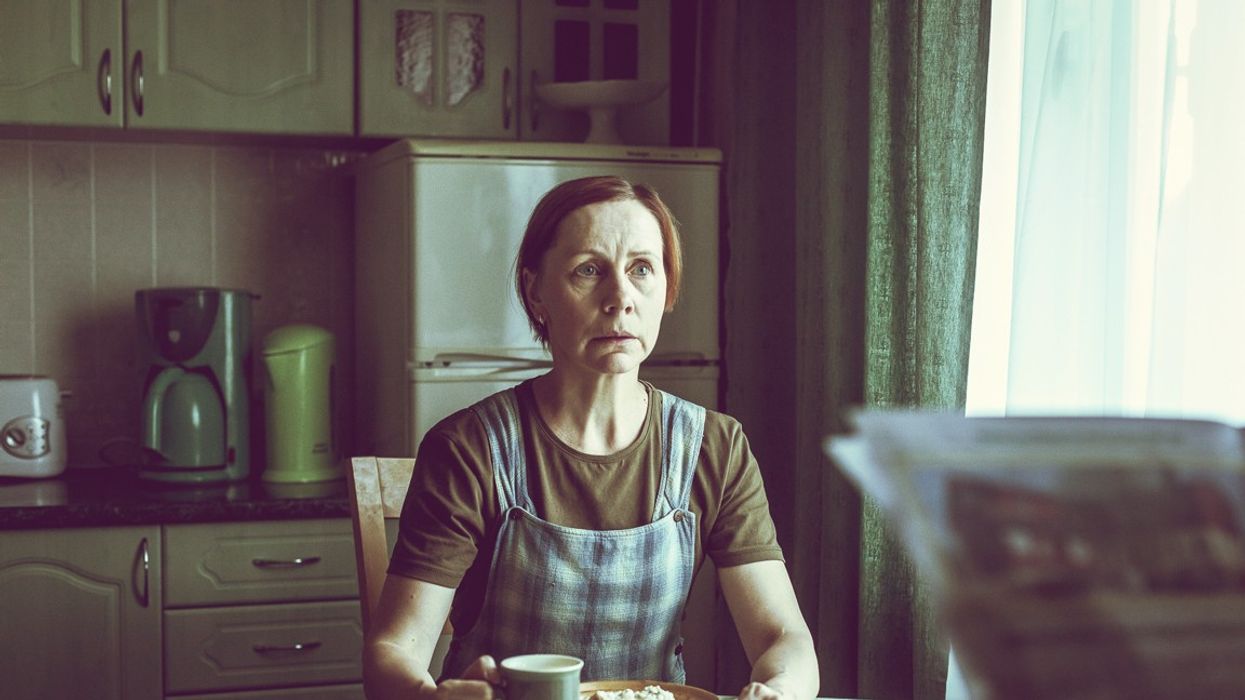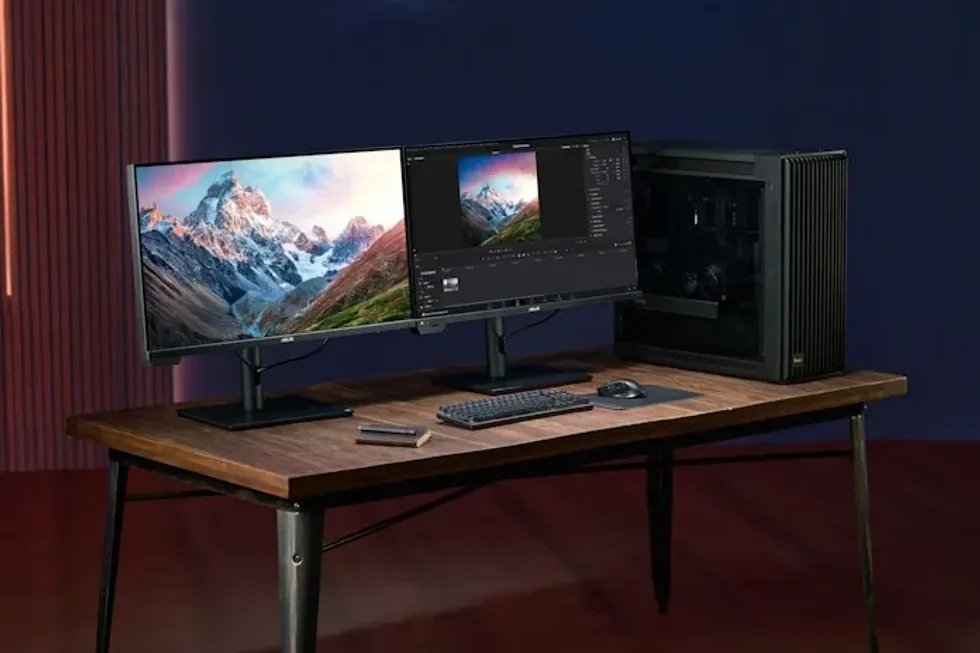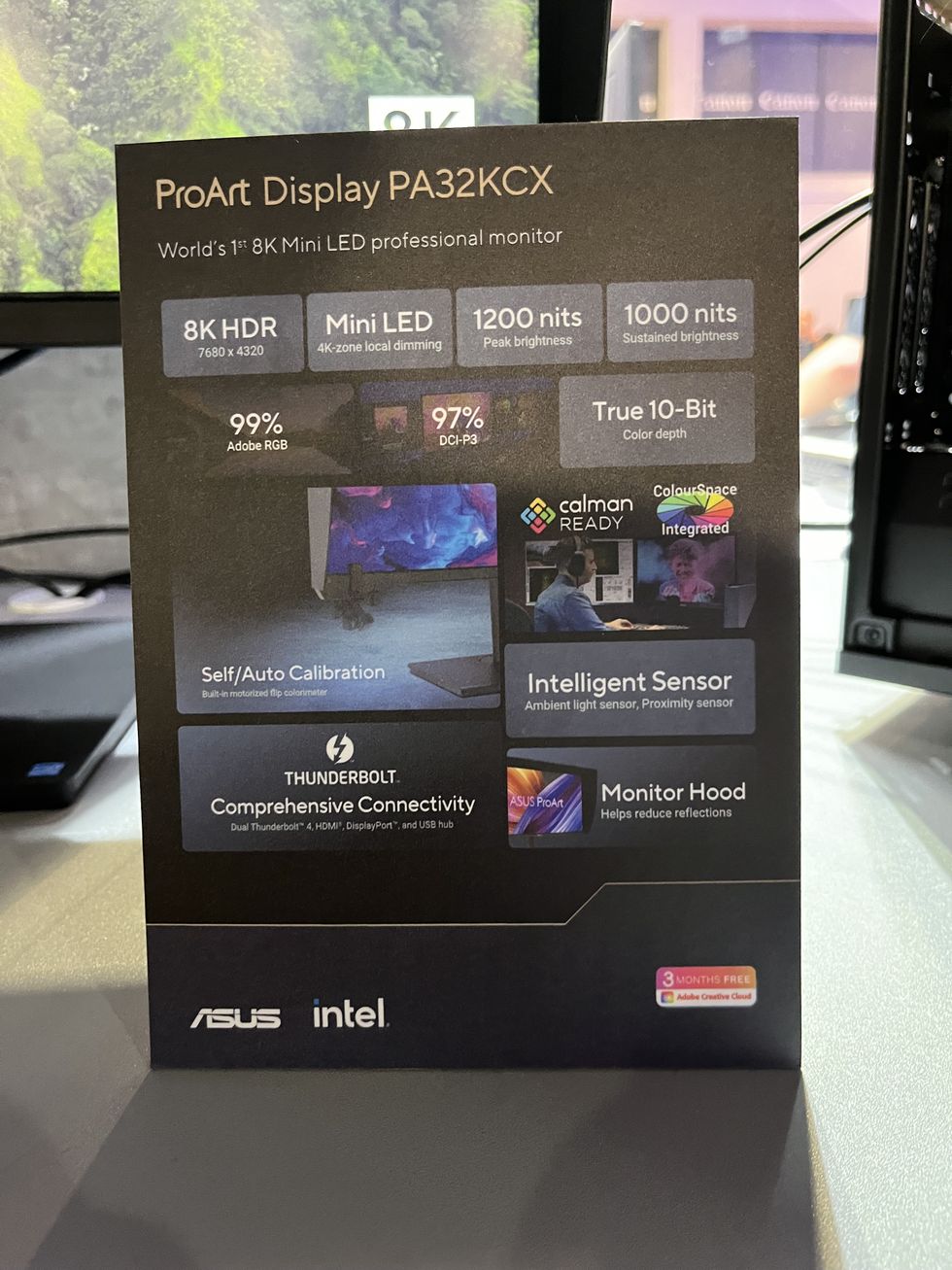How 3 Women Made Estonia's 'Fargo' in 6 Weeks
Meet Fargo's European counterpart: Mother, a new crime thriller from Estonia.

Directed by Kadri Kousaar (Magnus), Mother exposes the vermin beneath the quaint veneer of life in a small town. It's a quietly thrilling whodunit that demonstrates mastery of nuanced character humor. Like Fargo, it deals in absurdity and lurches toward a grim twist. But it is a film all its own: its distinct visual style and uniquely Post-Soviet perspective render it a fresh voice in the crime drama realm.
We meet Elsa (Tiina Mälberg) just after her son, Lauri (Siim Maaten), has sunk into a coma from which he may never emerge. Elsa has assumed the role of his caretaker; her loveless marriage is predicated on that role. She bathes her son, changes his sheets, and inserts liquid food into his mouth tubes. People from the village stop by the house, bringing with them of a continuous wave of anxiety, sorrow, and secrets. Everyone wants to know: Who shot Lauri? The town seems to have cherished the charismatic young man, who seemed to lack a single enemy.
No Film School spoke with Kousaar, co-writer/producer Aet Laigu, and co-writer Leana Jalukse about bringing the film to life— from blank page to screen—in less than six months.
NFS: How do you orchestrate your co-writing process?
Leana Jalukse: We come up with a setting or an idea. In this case, it was a mother with a comatose son, and people keep coming to visit him. Then, we move over to characters, and we do that very thoroughly. And then we start to work on the structure. When the structure is waterproof, we start to write the draft.
Aet Laigu: Normally, the idea comes from either one of us. In this case, I got the idea from my Irish colleague's radio series. The setting inspired me, but it's completely different. We get the spine of the story very solid, and then we write it out.
Jalukse: When we first started, it was just the set-up. And then the characters. And then we started brainstorming: Why is the son in the coma? Who put him there? What happened?
"We got everything made in one flow, and we had this fresh energy; we didn't lose patience or inspiration over years and years of waiting. The actual shooting process was about two weeks."
NFS: How do you flesh out the characters?
Jalukse: They're partly based on real people, but we also use character development tools. We have all these questions that you have to ask about a character to know them really well. When we start to write, the characters drive the story, not the other way around, because we know them so well.
Kousaar: I wanted the people visiting him in the coma to reveal a lot about themselves, not only about Lauri. I liked the idea because it was a challenge dramatically since most of the action takes place in one house. I wanted to create this atmosphere of seclusion since the mother feels trapped and cannot get out of the house.

NFS: You developed a very strong visual language inside the house. How did you conceive of it?
Kousaar: The aesthetics were very important to me. The image of the subject had to be gloomy. I wanted every shot to be symmetrical. But I also wanted there to be humor. Things are not black and white. Even if the subject matter is very serious and difficult, there is always an element of humor. Otherwise, it becomes monotonous and one-dimensional.
I talked to the cinematographer about creating a claustrophobic atmosphere. We worked together on a previous film, The Arbiter, so we understand each other quite well. What I like about his work is that he is very demanding in terms of colors. We had to change the wallpaper in all of the rooms because certain colors look better onscreen.
"With cinema, we sometimes forget that the screen is big, so it's easy to overact. It has to be about understatement and nuances."
NFS: How long was the writing and production process?
Jalukse: We got the idea in March and submitted a draft of the screenplay to a national competition for financing in May. So we wrote it in six weeks, and when we found out a month later that we won, we wrote another draft with only some small changes.
Kadri Kousaar: The Estonian Film Institute issues this fast-track program for low-budget films. There was a competition for scripts. It pretty much happened immediately. We won in May and shot in August.
Laigu: It was the fastest project I've ever done. Definitely the fastest project ever produced in Estonia.
Kousaar: That was the beauty of it. It was spontaneous. We got everything made in one flow, and we had this fresh energy; we didn't lose patience or inspiration over years and years of waiting. The actual shooting process was about two weeks.
Jalukse: [Laigu and I] have perfected this way of working so that we write very quickly and don't do very many drafts. Our collaboration works very well.
NFS: How involved were both of you when it came to the actual production?
Jalukse: I was the 2nd AD on set! I didn't realize people would still come to me and ask questions about the script. Normally that doesn't happen because the writer is never there.
The directors and actors and even the production design team came to ask me sorts of questions, like, "Is it okay to serve this food for their dinner?" They'd ask me for a last name of a character; things that I hadn't thought about. Once, someone came and asked me what the husband should be doing while the wife was working in the garden. I was like, "Nothing. Just standing there letting the woman work, like a normal Estonian guy!"
Sometimes the script would change on set. Since it's a mystery, we had to be careful about the details.

Laigu: For the older generation, yes. But it's quite different now for our generation. Now you see men pushing baby strollers because we have this system, like in Scandinavia, where fathers also get leave. Before, there were just women doing that.
NFS: That's more advanced than America.
Jalukse: [Laughs] What also defines these characters—this mother and father— is the fact that they're still together. These days, people are often divorced if they become unhappy [like these characters]. But people of a certain generation are taught that they have to stick together, and as long as the facade is in place and everyone in the village thinks that everything is okay, what happens behind closed doors doesn't matter.
"People have loved the fact that they leave the cinema and talk about the film later that evening, or even the next day. You really have to process it."
NFS: What were some big challenges you faced in getting this film off the ground?
Laigu: When you win the competition, you have to shoot the film very quickly, within six months. That was a big challenge to get the crew together and just do it. Normally, you have years and years of preparation and time.
Jalukse: Another challenge was having to shoot in a real house. It was spacious downstairs, but the son's room was so small that the cinematographer had to sit in a cupboard. Another challenge was getting people together for a concert for a scene in the film. We were clever and got a guy who's actually the winner of the Estonian Idol show, and thanks to him, we got many people on the fairground.
Laigu: It's only a couple of seconds of screen time. We needed 50-100 people, but when we got there, there were more than 300. We sent people away, but we invited them to the premiere.

NFS: How did you pull everything together so quickly?
Laigu: I tried to find people for the crew who I'd worked with before so we'd already know each other. This time around, the financing was easy, because winning the competition meant that the film was already mostly financed. We wound up having to find some additional sources, though. We tried to do as much ourselves as we could. I was 1st AD.
"I want people to watch our films. It's a very expensive medium. We use public money, so we have to make something that people will want to see."
NFS: What was your process working with your lead actress [Tiina Maelberg]?
Kousaar: Her role was crucial and the most difficult because she has to carry the film. She has this quiet tension in her face. She doesn't have to do anything because there's so much in her face. Also, as a person, she's very sensitive but she has the ability to laugh at herself.
She also had no problem being embarrassed onscreen. She had no problem with the sex scenes and the nudity. Her strength was that she could really open the soul of the character. But not too much; with cinema, we tend to forget that the screen is big, so it's easy to overact. It has to be about understatement and nuances. She has a natural talent for this balance.

NFS: What is the film scene like in Estonia?
Laigu: It's small! [Laughs] But actually, it's changing. Looking at the films that are popular in cinemas today, it's becoming more and more entertainment. It's sad.
Jalukse: Over the years, we've had some films that were successful in the festival circuit. At the same time, the people didn't go and see them in cinemas. I want people to watch our films. It's a very expensive medium. We use public money, so we have to make something that people will want to see. In Estonia, only about 10 feature films are made per year. Some are European co-productions.
NFS: What do people want to see?
Laigu: People want to go to the cinema and not think a lot.
Jalukse: But the response to our film has been really great. People have loved the fact that they leave the cinema and talk about the film later that evening, or even the next day. You really have to process it.

NFS: Because of the major reveal at the end, it's a film that lends itself to reinterpretation.
Jalukse: Yes. People see things that we didn't intend for.
Laigu: In film school at the University of Warwick in England, we studied Ozu. He often has these symbols in the frame, like a vase, and we would have these elaborate discussions about why the vase is there. But in reality, he probably just said, "We need something in the frame."
NFS: There's a line in this film that really stuck out to me. It's when the mother says, "You can get used to anything." It's a bleak statement on the human condition.
Jalukse: For her generation, this was very much the reality of life. You do the things you're expected to: get a job, find a husband, have children, have a beautiful house, compete with your neighbors for the most beautiful garden. You forget about yourself. You forget that you had other dreams; in this film, she wanted to go study abroad. The life she lives isn't the one she had hoped for when she was young. But she endured it for so long. You get used to anything. There are so many people in Estonia— and in the world—who feel that way.
Laigu: There's also a broader historical context. If you look at Estonia's history, we have been conquered by so many different countries. We were part of the Soviet Union for a very long time. The mentality was that there was no point in fighting it; you will get used to it. It's kind of sad, but that's what our people did. It's deep-rooted.
Be sure to check back for more coverage of Tribeca 2016.















